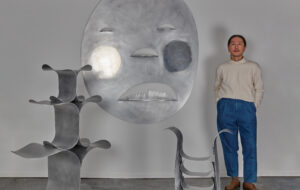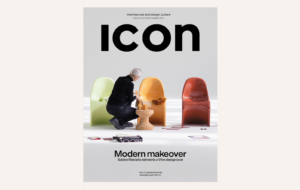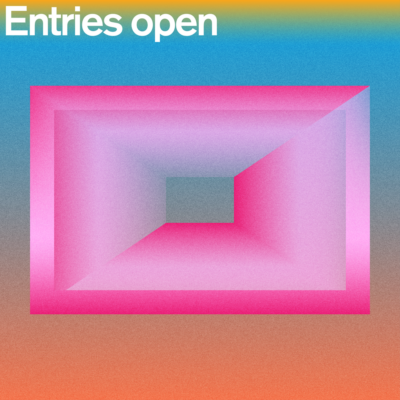


words Kieran Long
Peter Eisenman is in Berlin on the eve of the opening of his huge Memorial to the Murdered Jews of Europe. He is agitated and excited.
“The honest thing is, it’s not how I feel,” he says. “What’s going to be interesting is, like, you, walking in the field. People haven’t walked in the field. You’ve got to walk in the field to see how you feel. You’ve got to be in it.” The field he refers to is the 2,000 sq m city block just south of the Brandenburg Gate that is now occupied by 2,750 concrete monoliths – Berlin’s main monument to the murder of Jews by the Germans under Nazism. The memorial has been one of the most controversial architectural projects of recent years, dogged by political interventions, changes of government, and arguments hinging on Germany’s collective guilt over the Holocaust. The project was even halted for a month when it was discovered that Degussa, the manufacturer of the anti-graffiti coating used on the memorial, owned a company that supplied Zyklon B nerve gas to extermination camps before and during the Second World War.
Eisenman, the 73-year-old US architect, is bullish, though, about the process of building the memorial. “It has been incredible,” he counters. “This process would never have been possible in the US, nobody would have cared. About public space, they don’t care. I mean, Libeskind’s project for the World Trade Centre has been destroyed. Does anybody care? No.” Eisenman is a confirmed Europhile. He went to Cambridge University in 1960 and went on to form a friendship with French philosopher Jacques Derrida, who influenced him to apply his Deconstructionist ideas to architecture. Eisenman says that he publishes all of his books in German or Italian before they appear in English – those countries are where his “fans” are, not in the Anglo-American schools.
Eisenman is old enough now not to have to be too careful about what he says. He is showing his age slightly – a grubby jumper and a tendency to begin sentences that never really end – but he speaks stridently and presents himself as someone who tells it like it is.
He has said many times that he sees himself as the consummate maverick, an outsider in the US scene. But in recent years there has been a huge attempt to place Eisenman back at the heart of contemporary architectural culture. This process perhaps began with his entry, in collaboration with Richard Meier, Charles Gwathmey and Steven Holl, for the rebuilding of Ground Zero in Lower Manhattan. Although the project did not win, it was an emphatic statement of the continuity of New York’s architecture scene. Eisenman, Meier and Gwathmey were three (along with Michael Graves and John Hejduk) of the so-called New York Five – the last major architectural movement that the city produced. Its heyday was the 1970s, but it was clear that the Ground Zero project was emphasising the continuing relevance of this movement.
At the time, the monumental geometric modernism of the Ground Zero project was seen as being influenced most by Meier and by the younger Holl’s student housing block for the Massachusetts Institute of Technology. However, at the 2004 Venice architecture biennale, Eisenman’s influence was unambiguously asserted, not just as the generator of this American scene, but as the root of the various strands of Supermodernism. It suddenly became apparent that Koolhaas’ CCTV building in Beijing bears a striking resemblance to Eisenman’s design for the Max Reinhardt Haus. His cultural centre in Galicia (now under construction) was lavishly exhibited, and resembled strongly Foreign Office Architects’ manipulation of ground planes and surfaces. The Italian pavilion was dominated by an installation by Eisenman that asserted his own pedigree – a straight line leading from Alberti to Le Corbusier and Terragni (Eisenman has a particular obsession with the Italian fascist-era architect). It was a new version of architectural history, and there was no doubt who was at the heart of it. Eisenman is surely no longer the outsider.
Meanwhile, Eisenman’s office is bigger than it has ever been. His Wexner Centre at Ohio State University was an essential building of the 1980s, but it is only recently, with projects like the $450 million stadium for the Arizona Cardinals in Glendale that he has been transformed from an academic and occasional designer of highly eccentric buildings to a builder of major public projects.
Eisenman won the competition for the Berlin Holocaust memorial in 1994, in collaboration with artist Richard Serra. Then, the project consisted of 4,100 blocks covering an even bigger area, but after Gerhard Schroeder was elected German chancellor in place of Helmut Kohl (the project’s original supporter) in 1998, this was cut to the current number of 2,750.
Eisenman knows when to make a compromise. He says: “Architecture must be modified, it can’t be 100 per cent. That’s why Richard Serra quit, because for him sculpture is 100 per cent – ‘you don’t muck with my work …’ Architects’ work is always being mucked with; the question is how much mucking about are you going to take? Right? At a certain point you say, you know it’s not worth it.” Serra apparently walked away from the project when Helmut Kohl insisted there should be trees on the pavements around the memorial. But he has remained a supporter of the project and admires the result, according to Eisenman. “Oh yeah, he thinks its great. Richard said it’s a cross between de Chirico, Kafka and death.”
Despite Eisenman’s self-styled reputation as a maverick, the Berlin memorial demonstrates that he has become a politician, skilled at getting his projects built even while others are falling by the wayside. When the project was rethought in 1998, Eisenman agreed to integrate an underground interpretation centre into the design, a decision that irritates him and compromises the sensory aspirations of the project.
He describes the monument as “silent”, even “dumb”, but how does this work with the addition of an information centre full of relics and explanatory texts? “It doesn’t work at all. Because I believe the world is too full of information … Architecture is not about information any more. Architecture is about feeling, space and time. The body, the reaction of the mind and the eye. What we were trying to do was to change the notion that the primary condition of architecture is optical, that is material, form etc. What we were saying is that one of the primary conditions of architecture should be the visual other than optical. That is mental, perhaps, physical, experiential, our body and how it feels. To me we achieved that over here, and the information centre was the compromise we had to make in order to build it. But you notice it’s underground – it’s not a big kiosk on the top.”
These conversations overwhelmingly bring to mind Daniel Libeskind’s Berlin Jewish Museum, a building generally accepted as having had more power when it was empty than after the rather crude exhibition was installed. Libeskind is perhaps Eisenman’s most famous student, and although they have more recently disagreed many theoretical points, Eisenman is an admirer of the building. “I teach Daniel’s building, I think it’s one of the great buildings of the second half of the 20th century. There are certain buildings which have a canonical dimension,” he says.
However, he is conscious that repeating formal tricks can make them lose their value, and levels this criticism at his former protégé. “I think the minute Daniel tries to repeat that, like, in everything he does, it becomes kitsch. I don’t think he can continue, I mean in other words, if Peter Eisenman tried to do this again … ugh, awful. You know, his V&A project, the museum in Manchester, I’m not convinced they have the same energy. [The Berlin Jewish Museum] is a great building. I’m not sure the others are.”
As we wander out to take photos in the memorial, Eisenman chats away about a number of suprising topics – his hopes that West Bromwich Albion are not relegated from the English Premiership, the beauty of the women in Cambridge in the springtime, his enthusiasm for republics over democracies. Now in the final phase of this career, with his intellectual touchstone Jacques Derrida dead and a wider recognition of his own work developing, Eisenman is perhaps freer intellectually than he has ever been, and more determined to enjoy himself. He certainly gives good quote. “I’m straight out of central casting! Rent an Eisenman!” he returns, heading down one of the undulating canyons of the field of blocks. As he wanders into the midst of one of the most politically loaded building sites there has ever been, he seems a picture of contentment and playful speculation. “These shadows are fucking great, holy shit! This is not a place for a proper Charlie – this is not a walk in the park! Holy Jeepers! You really feel something.”




















